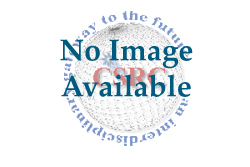 |
||||||||
 |
 |
 |
 |
 |
| In Search Of A Practical Non-Invasive Method For Contractility Measurements In Rat Cardiocytes | ||
|
Background: I have developed a convenient method
for measuring contractile responses of both adult and neonatal mammalian
cardiocytes. These methods can be employed to quantify pharmacologic
effects of drugs on myocytes. Methods of quantifying neonatal cell
contraction reported in the literature have required the use of
elaborate methods such as a proximity detector or an atomic force
microscope (to measure the increase in cell elevation as the cell
contracts), and typically interfere with simultaneous optical recording
of cell signals such as the calcium transient.
|
 | |
|
Methods: Optical digital images are first
obtained from a CCD camera mounted on an inverted phase contrast microscope.
The video images are later analyzed frame by frame using functions
available in Matlab's Image Processing Toolbox. Image optimization
techniques were applied to a sequence of frames depicting a contracting
neonatal myocyte, focusing in intracellular fine structure details,
specifically by monitoring the area of small inclusions within the
cell thought to be protomyofibrils. The application of image analysis
tools with this software allows measurement of the adult cardiocyte's
area and optical density in each frame for corroboration purposes.
Results: Application of this measurement technique produces contraction vs. time records virtually identical in time course and shape to records obtained by cell boundary tracking procedures when applied to the study of adult cardiocytes. Contraction curves generated from neonatal cells exhibit the same profile and time course. Adult cardiocyte analysis of the area of the cardiocyte in each frame yields a graph depicting sarcomere shortening versus time. The neonatal cardiocyte method utilizes phase contrast images showing inclusions that change their phase contrast image appearance (including inclusion size). The contractility graphs created by the two methods are consistent with the expected results and graphs created by more complicated existing methods. Conclusions: This new methods for myocyte contractility quantification will be helpful in the analysis of the contractile dynamics in the presence of drugs. The adult myocyte method has been found to be successful and valid. The new neonatal method has so far provided promising results, although it is still under analysis and we are considering strategies to validate the method with independent measurements of microforce or protomyofibrillar shortening by the application of high resolution imaging. | ||
| • Other Abstracts • | ||